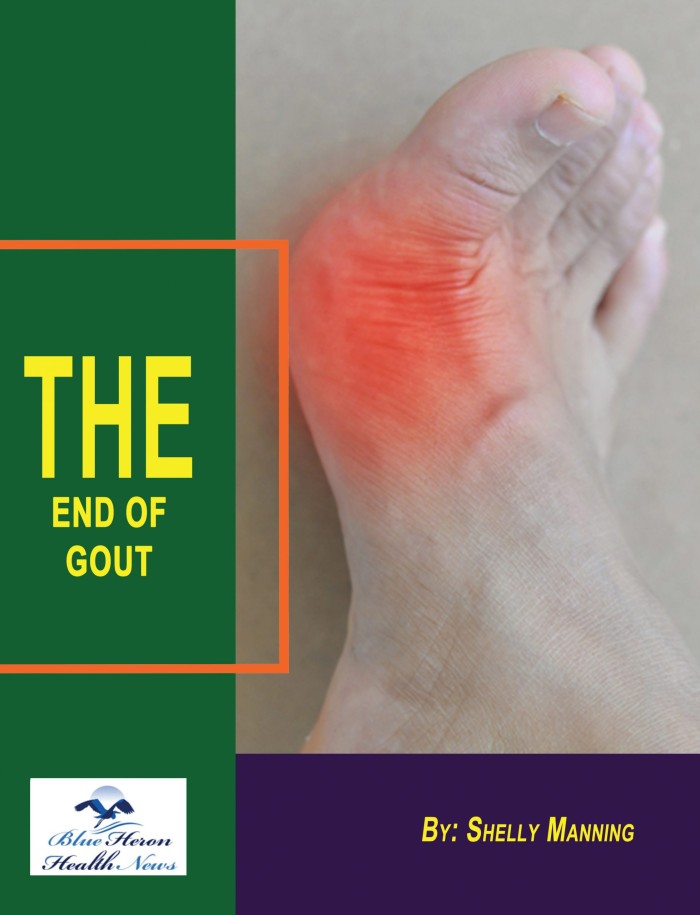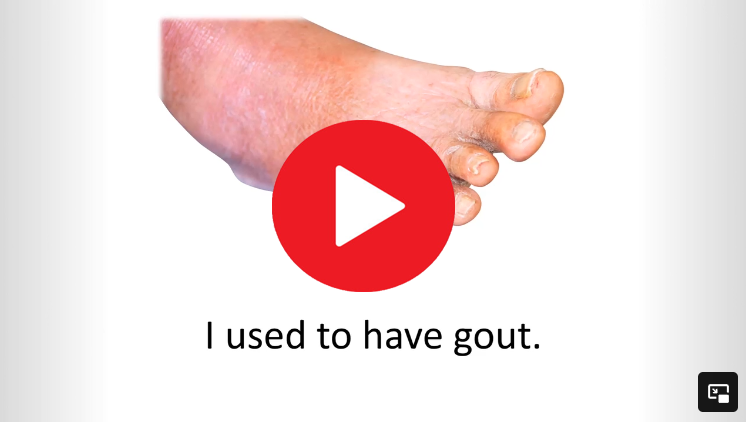This eBook from Blue Heron Health NewsBack in the spring of 2008, Christian Goodman put together a group of like-minded people – natural researchers who want to help humanity gain optimum health with the help of cures that nature has provided. He gathered people who already know much about natural medicine and setup blueheronhealthnews.com. Today, Blue Heron Health News provides a variety of remedies for different kinds of illnesses. All of their remedies are natural and safe, so they can be used by anyone regardless of their health condition. Countless articles and eBooks are available on their website from Christian himself and other natural health enthusiasts, such as Julissa Clay , Shelly Manning , Jodi Knapp and Scott Davis. |
Gout and Virtual Reality for Pain Management
Virtual Reality (VR) is emerging as a new and non-invasive approach to pain treatment, including gout pain, which is classically depicted by intense, acute inflammation attacks in the joints. VR provides a unique, immersive environment in which patients can be diverted from pain, stress reduced, and relaxation guaranteed, all of which are beneficial for managing chronic conditions like gout. These are the means by which VR can be applied in gout pain management:
1. Pain Distraction
Immersive Experience: Perhaps the most influential aspect of VR is its ability to distract from pain. By exposing patients to a virtual world—maybe a calming natural scene, an interactive guided meditation session, or an engrossing interactive game—VR has the ability to divert attention from the aching of gout attacks. That diversion might suppress the pain by crowding the brain with engaging sensory activity that competes with pain messages.
Cognitive Behavioral Therapy (CBT): VR can be used to employ CBT techniques, a widely acclaimed method for pain management. During these VR sessions, patients are guided through cognitive training that teaches them how to reframe or reinterpret their pain experiences. This can potentially lower the psychological and emotional impact of pain caused by gout.
2. Relaxation and Stress Reduction
Relaxing Settings: It is possible to use VR to send patients to relaxing settings such as peaceful beaches, woods, or mountains, which have a tendency to reduce stress and anxiety—two states that are known to increase pain sensitivity. Deep breathing, progressive muscle relaxation, or mindfulness meditation can be incorporated into the VR settings as relaxation strategies to further maximize pain alleviation by soothing the nervous system.
Autonomic Nervous System Regulation: Through the induction of relaxation, VR experiences can also regulate the autonomic nervous system, which controls involuntary functions like heart rate, blood pressure, and the perception of pain. This can help regulate the pain and discomfort of gout attacks, which may sometimes be triggered by stress.
3. Improved Quality of Sleep
Better Sleep through Relaxation: Sleep in gout patients is disturbed by pain, which can worsen the condition, creating a pain and poor sleep vicious circle. VR can assist in bettering sleep quality by inducing relaxation before sleep, and this might reduce the severity of nocturnal attacks and also improve overall well-being. Using VR to trigger sleep-inducing skills may result in improved sleep, enabling patients to heal from gout attacks.
Chronic Pain and Sleep: Effective pain control with the use of VR can lead to better sleep patterns, which is crucial in chronic disease patients like those with gout. Better sleep can increase immune function, reduce inflammation, and improve healing in general.
4. Physical Rehabilitation and Mobility
Movement and Joint Mobility Exercises: Joint mobility is typically limited by swelling and pain during gout attacks. VR can be used to facilitate gentle movement and rehabilitation exercises of joints affected by gout. Virtual exercises and physical therapy sessions can be designed to encourage gout patients to gently move their affected joints without eliciting additional pain. The exercises can be tailored based on the patient’s status with the objective of improving joint mobility and reducing stiffness.
Motivation for Exercise: Exercise may be made interesting and fun by utilizing VR, and this may be especially useful for patients who feel dejected or frustrated with their condition. Exercising by playing VR games or experiencing VR simulations can lead to improved joint function and reduced risk of future gout attacks, since repeated motion keeps the joints relaxed and reduces inflammation.
5. Emotional and Psychological Benefits
Better Mood: Gout imposes a huge psychological load on the suffering, especially during flare-ups. The episodes of pain, discomfort, and annoyance at always being reminded of these by confinement can trigger depression and anxiety. VR improves mood by taking one to the realm of escape and enabling one to engage in fun or positive things, which break one away temporarily from having the burden of chronic pain.
Relief from Pain by Improving Mood: Positive affective experiences have been known to reduce the perception of pain. By enhancing mood and anxiety reduction through active VR environments, patients can experience less severe pain during gout attacks. Such psychological alleviation can also contribute to enhanced overall pain management.
6. Patient Education and Self-Management
Virtual Education: VR may be utilized as an educational intervention to educate patients on gout, its pathogenesis, precipitating causes, and best management practices. Interactive, engaging VR sessions can help patients understand the importance of keeping uric acid under control, adherence to medications, and good lifestyle habits. Patient education through VR may increase patients’ self-management skills and improve their adherence to the treatment plan.
Instructional Coping Strategy Learning: Virtual reality has the potential to offer scenarios where the patient can learn to apply coping strategies in response to pain. Coping strategies can include using mindfulness, breathing exercises, or the use of relaxation cues. By rehearsal within a simulation setting, the patient may be able to better handle a gout attack when it eventually occurs in real life.
7. Individualized Pain Management Programs
Personalized Experiences: One more benefit of VR is that it can be very personalized. Different patients react in different ways to different stimuli, and VR experiences can be created based on their needs. For example, a patient with acute pain may need a relaxing and calming VR experience, while a patient with chronic pain may need more immersive or interactive VR experiences.
Personalization to Personal Preferences: VR sessions also can be personalized based on the patient’s personal preference, such as the type of music that they prefer, environment (nature or city), or activity type (guided meditation or interactive games). This ensures that the VR session feels personalized and optimally effective for each patient.
8. Supplementary to Traditional Gout Treatments
Adjunct to Treatment: VR pain relief can be employed as an adjunct to the conventional gout treatments like NSAIDs, colchicine, or uric acid-lowering therapy. VR is not a substitute for medicines, but it can reduce the reliance on pain drugs by complementing relief from pain, reducing the intake of pharmaceuticals, and possibly lowering side effects of long-term drug consumption.
Reducing Medication Overuse: Some gout patients might be over-reliant on medication during flare-ups, which can lead to side effects like gastrointestinal issues or kidney problems. By using VR as a tool for pain relief, patients may reduce their need for medication during mild flare-ups, leading to better long-term health outcomes.
9. Long-Term Pain Management
Control of long-term pain: As gout is also a long-term type of pain in which flare-ups recur over and over, VR can be integrated into a long-term pain control regimen. By being administered on a regular basis as part of normal self-care activity, patients become more in control of their pain state, reduce accompanying emotional distress associated with flare-up cycles, and improve general living quality.
Control and Empowerment: Control of pain experience using the services of VR can also be a potential source of empowerment for gout patients, granting them the independence to manage their condition better. This autonomy is likely to augment their psychological wellness, increase the level of adherence to treatment interventions, and ensure a sense of well-being in the face of the disruptions produced by gout.
Conclusion
Virtual Reality (VR) is a new, thrilling tool in the management of gout pain, particularly to distract from pain, be relaxing, be more mobile, and have some psychological advantages. As part of an integrated practice of gout management, VR can supplement standard treatments, improving patients’ conditions by providing relief during attacks, promoting proper lifestyle, and improving quality of life. Even if still a young technology in pain control, VR is potentially a breakthrough technology in treating gout, especially for patients who desire a more natural or non-medication approach to reducing pain.
Should you like to learn more about the use of VR in pain management or in gout care, you can ask!
Blue Heron Health News
Back in the spring of 2008, Christian Goodman put together a group of like-minded people – natural researchers who want to help humanity gain optimum health with the help of cures that nature has provided. He gathered people who already know much about natural medicine and setup blueheronhealthnews.com.
Today, Blue Heron Health News provides a variety of remedies for different kinds of illnesses. All of their remedies are natural and safe, so they can be used by anyone regardless of their health condition. Countless articles and eBooks are available on their website from Christian himself and other natural health enthusiasts, such as Shelly Manning Jodi Knapp and Scott Davis.
About Christian Goodman
Christian Goodman is the CEO of Blue Heron Health News. He was born and raised in Iceland, and challenges have always been a part of the way he lived. Combining this passion for challenge and his obsession for natural health research, he has found a lot of solutions to different health problems that are rampant in modern society. He is also naturally into helping humanity, which drives him to educate the public on the benefits and effectiveness of his natural health methods.

